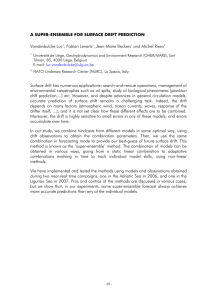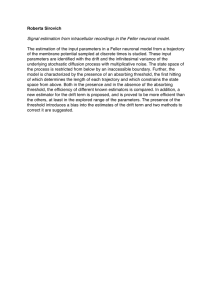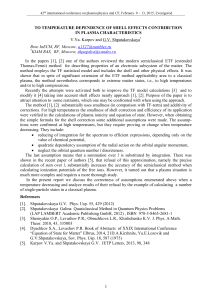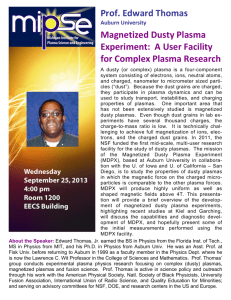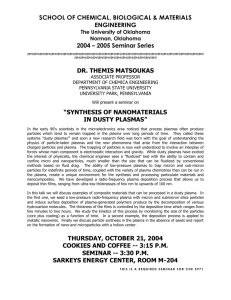electron transport coefficients in helium*xenon mixture
advertisement
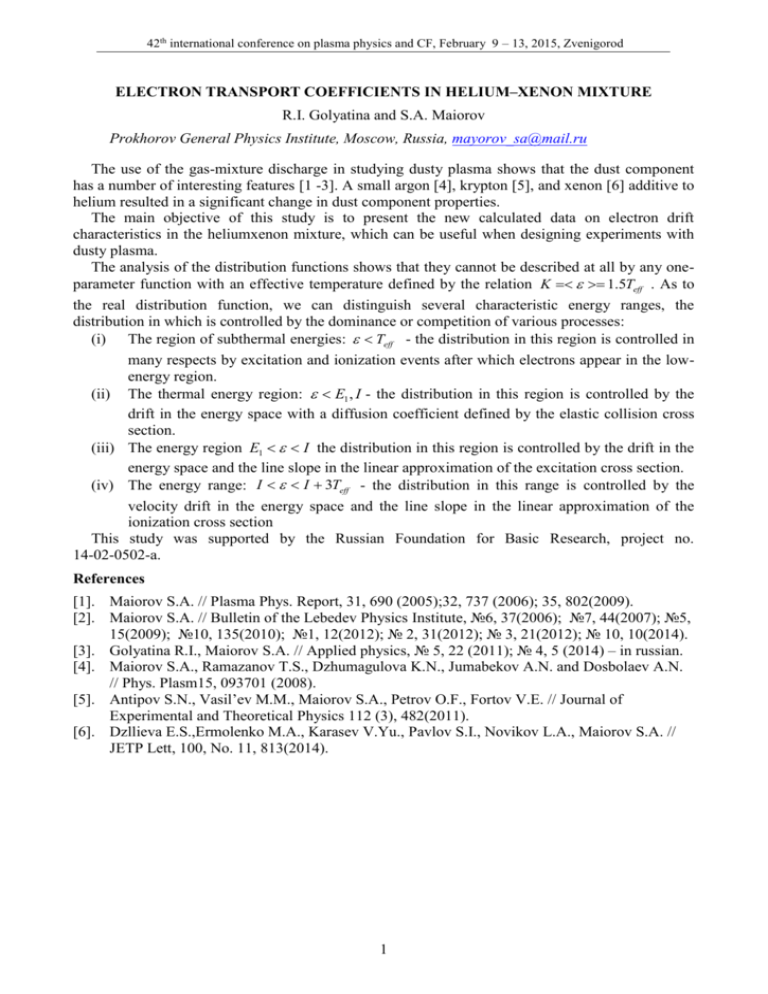
42th international conference on plasma physics and CF, February 9 – 13, 2015, Zvenigorod ELECTRON TRANSPORT COEFFICIENTS IN HELIUM–XENON MIXTURE R.I. Golyatina and S.A. Maiorov Prokhorov General Physics Institute, Moscow, Russia, mayorov_sa@mail.ru The use of the gas-mixture discharge in studying dusty plasma shows that the dust component has a number of interesting features [1 -3]. A small argon [4], krypton [5], and xenon [6] additive to helium resulted in a significant change in dust component properties. The main objective of this study is to present the new calculated data on electron drift characteristics in the heliumxenon mixture, which can be useful when designing experiments with dusty plasma. The analysis of the distribution functions shows that they cannot be described at all by any oneparameter function with an effective temperature defined by the relation K 1.5Teff . As to the real distribution function, we can distinguish several characteristic energy ranges, the distribution in which is controlled by the dominance or competition of various processes: (i) The region of subthermal energies: Teff - the distribution in this region is controlled in many respects by excitation and ionization events after which electrons appear in the lowenergy region. (ii) The thermal energy region: E1 , I - the distribution in this region is controlled by the drift in the energy space with a diffusion coefficient defined by the elastic collision cross section. (iii) The energy region E1 I the distribution in this region is controlled by the drift in the energy space and the line slope in the linear approximation of the excitation cross section. (iv) The energy range: I I 3Teff - the distribution in this range is controlled by the velocity drift in the energy space and the line slope in the linear approximation of the ionization cross section This study was supported by the Russian Foundation for Basic Research, project no. 14-02-0502-a. References [1]. Maiorov S.A. // Plasma Phys. Report, 31, 690 (2005);32, 737 (2006); 35, 802(2009). [2]. Maiorov S.A. // Bulletin of the Lebedev Physics Institute, №6, 37(2006); №7, 44(2007); №5, 15(2009); №10, 135(2010); №1, 12(2012); № 2, 31(2012); № 3, 21(2012); № 10, 10(2014). [3]. Golyatina R.I., Maiorov S.A. // Applied physics, № 5, 22 (2011); № 4, 5 (2014) – in russian. [4]. Maiorov S.A., Ramazanov T.S., Dzhumagulova K.N., Jumabekov A.N. and Dosbolaev A.N. // Phys. Plasm15, 093701 (2008). [5]. Antipov S.N., Vasil’ev M.M., Maiorov S.A., Petrov O.F., Fortov V.E. // Journal of Experimental and Theoretical Physics 112 (3), 482(2011). [6]. Dzllieva E.S.,Ermolenko M.A., Karasev V.Yu., Pavlov S.I., Novikov L.A., Maiorov S.A. // JETP Lett, 100, No. 11, 813(2014). 1


